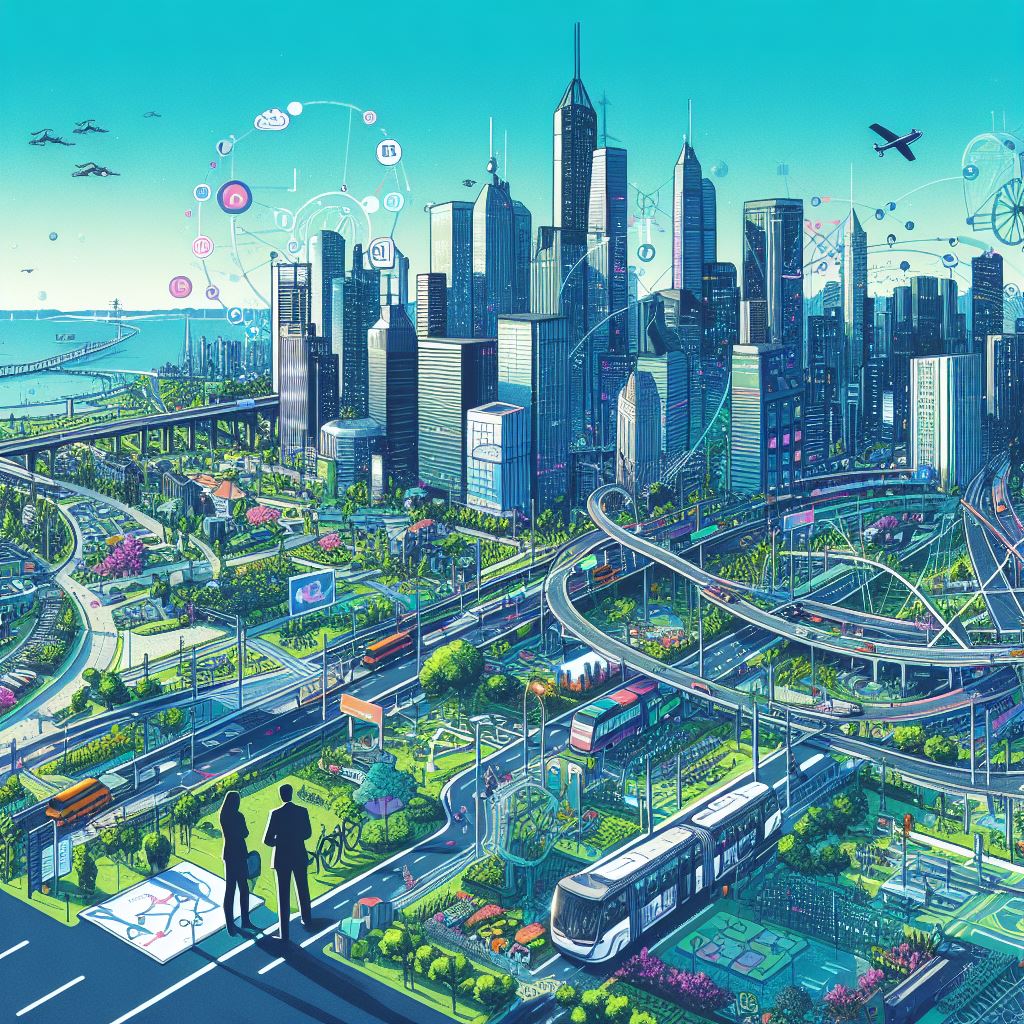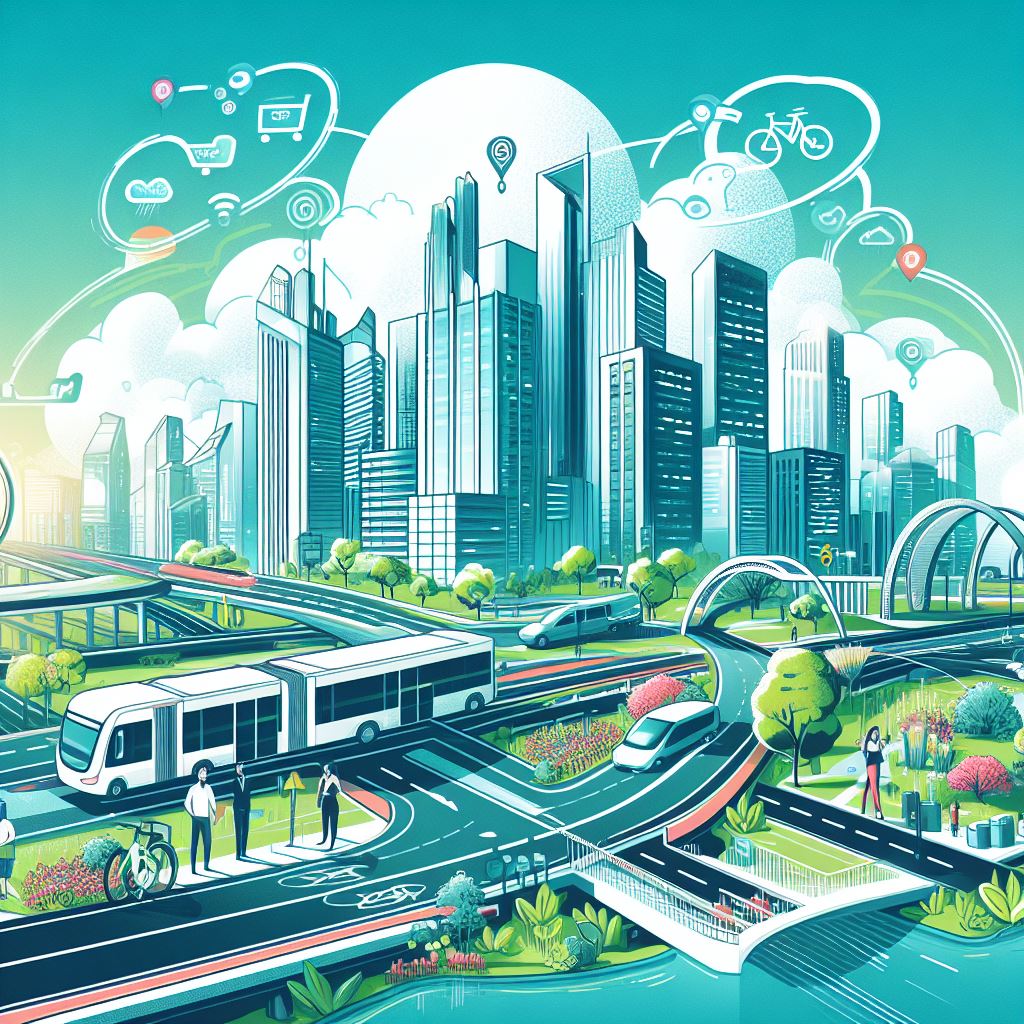
Transportation Planning: A Cornerstone of Successful Urban Development
Introduction
Transportation planning plays a pivotal role in shaping the trajectory of urban development. It is a crucial component in the establishment of sustainable cities, integrating seamlessly with land use and urban growth strategies. This article aims to provide an in-depth, authoritative, and engaging exploration of the growing importance of transportation planning in urban development. It will delve into the historical context, benefits, challenges, and the future of urban transit, providing valuable insights for urban planners, city officials, transportation professionals, and anyone interested in metropolitan growth.
Historical Context of Transportation Planning in Urban Development
Understanding the historical context of transportation planning is essential to grasp its evolution and significance in urban development. In the early stages of urbanization, cities were primarily designed around pedestrians, with narrow streets and mixed land uses. However, the advent of automobiles necessitated a shift in urban planning paradigms, emphasizing wider roads and segregated land uses to accommodate vehicular traffic.
Case Study: New York City
New York City serves as a prime example of the evolution of transportation planning. The city has undergone numerous transformations, from horse-drawn carriages to subways and buses, each mode shaping the urban infrastructure and influencing city development strategies.
The Symbiotic Relationship between Urban Growth and Transportation Systems
Transportation systems and urban growth share a symbiotic relationship, each influencing the other's evolution. Efficient transit planning fosters sustainable urban development by reducing traffic congestion, improving air quality, and stimulating economic growth. Conversely, urban growth necessitates the continuous adaptation and enhancement of transportation systems to meet the evolving needs of the population.
Benefits of Effective Transportation Planning
Effective transportation planning yields numerous benefits, contributing to the overall well-being and sustainability of cities. Some of the key benefits include:
- Reduced Traffic Congestion: Efficient transit systems alleviate traffic congestion, promoting smoother commutes and reducing travel times.
- Improved Air Quality: By minimizing vehicular emissions, transportation planning enhances air quality and mitigates environmental degradation.
- Economic Growth: Well-planned transportation networks facilitate commerce and industry, driving economic development and job creation.
- Enhanced Quality of Life: Improved mobility and accessibility contribute to the overall quality of life for city dwellers.
Example: Copenhagen
Copenhagen’s commitment to cycling infrastructure exemplifies the benefits of effective transportation planning. The city's extensive network of bike lanes has reduced traffic congestion and pollution, promoting a healthier, more sustainable urban environment.
Integrating Transportation and Land Use Planning
The integration of transportation and land use planning is a fundamental aspect of developing sustainable cities. It involves coordinating transit systems with land development to optimize accessibility, minimize travel distances, and encourage the use of public transportation.
Challenges in Urban Transportation Planning
Urban transportation planning faces numerous challenges, including rapid urbanization, population growth, and changing mobility patterns. Some of the prominent challenges are:
- Balancing Diverse Needs: Catering to the varied mobility needs of the population while maintaining sustainability can be daunting.
- Funding Constraints: Limited resources and budget constraints often hinder the implementation of optimal transportation solutions.
- Technological Adaptation: Keeping pace with evolving technologies and integrating them into existing systems pose significant challenges.
Solutions and Innovations
Addressing the challenges in transportation planning requires innovative solutions and the adoption of cutting-edge technologies. Some potential solutions include:
- Smart Mobility Strategies: Leveraging technology to optimize transportation systems, enhance connectivity, and improve user experiences.
- Sustainable Transit Options: Promoting walking, cycling, and public transit to reduce reliance on private vehicles and curb emissions.
- Policy Reforms: Implementing policies that encourage sustainable mobility and land use practices.
Case Study: Singapore
Singapore’s implementation of Electronic Road Pricing (ERP) exemplifies innovative solutions in urban transportation planning. The ERP system regulates road usage, mitigates congestion, and encourages the use of public transit, contributing to the city’s sustainability goals.

The Role of Technology and Innovation in Modern Transportation Planning
Technology and innovation are driving forces in modern transportation planning. They enable the development of smart, adaptive, and efficient transit systems that cater to the dynamic needs of urban environments. Examples include autonomous vehicles, real-time traffic management systems, and mobility-as-a-service platforms, which are revolutionizing urban mobility strategies.
Future Trends and Predictions
The realm of urban transportation is poised for transformative changes, with several trends and predictions shaping its future. These include:
- Sustainability: The emphasis on sustainability will continue to grow, with cities adopting greener, more eco-friendly transit options.
- Digitalization: The integration of digital technologies will enhance transportation efficiency, user experiences, and system adaptability.
- Multimodal Transit Networks: The convergence of various transportation modes will offer more flexible and convenient mobility solutions.
Conclusion
Transportation planning is integral to the success of urban development, shaping the growth and sustainability of cities. It has evolved significantly over the years, adapting to the changing needs and demands of urban environments. The integration of transportation and land use planning, coupled with technological innovations, is pivotal in addressing the challenges faced by cities and fostering sustainable urban development.
Key Takeaways
- Transportation planning is crucial in shaping sustainable urban growth and development.
- The integration of transportation and land use planning is fundamental for optimizing accessibility and minimizing travel distances.
- Technology and innovation play a significant role in modernizing transportation planning and addressing urban mobility challenges.
- The future of urban transportation will witness increased emphasis on sustainability, digitalization, and multimodal transit networks.
This article provides a comprehensive overview of the growing importance of transportation planning in urban development, offering insights, examples, and case studies that elucidate its significance, benefits, challenges, and future trends. It serves as a valuable resource for urban planners, policymakers, transportation professionals, and anyone interested in the development of sustainable cities.
The Renaissance of MetrovilleIn the heart of the sprawling metropolis of Metroville, a city once choked by the relentless grip of traffic congestion and smog, a transformation was brewing. The year was 2045, and the city was on the brink of a renaissance, driven by the vision of a young urban planner named Clara. Clara had grown up in Metroville, and her childhood memories were tainted by the hours spent in traffic jams, the blaring horns, and the gray haze that often obscured the sun. She remembered the days when her asthma attacks were triggered by the polluted air, and the frustration of not having safe pathways to cycle or walk to school. But Clara was not one to be bogged down by the past. Inspired by her experiences and armed with a degree in Urban Development, she returned to Metroville with a dream. A dream to transform the city into a beacon of sustainable urban growth, where transportation planning would be the cornerstone of its success. She began by rallying a team of experts: transportation engineers, policymakers, and city developers. Together, they embarked on a mission to integrate transportation and land use planning. They envisioned a city where roads were not just for cars but for people. They imagined neighborhoods where one could work, play, and live without having to travel long distances. The first step was to reduce the city's reliance on private vehicles. Clara introduced a state-of-the-art public transit system, with electric buses and trams connecting every corner of Metroville. Old, unused railway tracks were transformed into green pathways for cyclists and pedestrians. Buildings were redesigned with rooftop gardens, and spaces were allocated for urban farming. But the challenges were numerous. Funding was a constant hurdle, and there were those who resisted change, skeptical of Clara's vision. They questioned the feasibility of her plans and the sacrifices required. But Clara was undeterred. She organized community meetings, showcased the benefits through simulations, and even brought in examples from cities worldwide that had successfully integrated transportation planning into their urban development strategies. One of her most significant achievements was the creation of the "Green Corridor" – a stretch in the heart of Metroville that was once a congested highway. It was now a haven for pedestrians, cyclists, and electric vehicles. Trees lined the pathways, and the air was noticeably cleaner. Children played in parks that were once parking lots, and birds that had long left the city were returning. As years passed, Metroville began to witness the benefits of Clara's initiatives. Traffic congestion reduced drastically, the air quality improved, and the economy thrived with new businesses setting up close to transit hubs. The city became a case study for many, a testament to the power of effective transportation planning. In her twilight years, Clara would often visit the Green Corridor, sitting on a bench and watching the world go by. Parents teaching their kids to cycle, couples enjoying a leisurely stroll, and the clear blue sky overhead. It was a far cry from the Metroville she remembered from her childhood. And as the sun set, casting a golden hue over the city, Clara's legacy stood tall. A city reborn, a city that moved not just vehicles but hearts and dreams. Metroville was no longer just a city; it was a living, breathing testament to the transformative power of transportation planning in urban development. |





